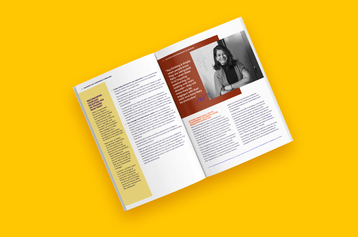
As organizations work to provide the best possible benefits packages, paid time off (PTO) is No. 1 perk job seekers want. The ability to take time off when sick, when personal issues arise, and when it’s time to vacation and unwind is at the top of the list. Paid time off is generally a blanket term that covers all these options, and often more. PTO can also include time off for a sabbatical or to participate in volunteer duties. Some companies have unlimited paid time off as a perk. Some businesses afford their workers a block of PTO time to use at their discretion. It allows staff the option of allocating the time as they see fit: no more calls to the manager with a crackly voice announcing they’re taking a sick day — they simply assign the days off themselves. Other companies still want that phone call in the morning, whether they believe the raspy employee or not.
Medical leave may be housed under the umbrella term PTO, but it is distinct. It doesn’t typically refer to basic sick days, such as time off here and there for the sniffles or other short-term illnesses. When employees require medical leave, there is typically a significant physical or mental health issue that needs to be addressed. These leaves tend to be longer term, but they can also be broken up into smaller blocks, depending on the situation and the needs of the employee and business.
Paid time off
Running the gamut from personal days, sick time, vacation days and more, PTO is an overarching term that covers all the time off — with pay — businesses provide their employees. Holiday pay, paid time to serve on jury duty, bereavement pay, and time off to vote may also be included. Some companies provide military pay to staffers who have to train periodically during the year. For businesses whose busiest time is during holiday seasons, floating holidays may be offered. In some organizations, shared leave policies allow workers to donate their accumulated earned leave time to others who may be experiencing a significant health or family issue and have exhausted all their paid time off.
Some even consider parental leave PTO. When employees request family leave to adjust to a new child in the household or attend to the needs of an ill family member, this time can be PTO. If the organization provides pay for family leave, they may support the staffer. If the employee has accumulated their own time off, they may leverage those earned days to provide wages during family leave time.
Medical leave
Medical leave is more defined: it requires a significant physical or mental health situation that arises for the specific employee — not a family member. Some companies offer paid or unpaid medical leave in the event of a health issue, regardless of the employee’s status. Others require a minimum amount of time on the job. For most workers, medical leave is mandated under the Family and Medical Leave. Employee eligibility for FMLA is regulated federally, but some states have their own guidance. Minimally to qualify, a worker must have worked at least 1,250 hours in the previous 12 months at the company to receive consideration for FMLA. FMLA applies to companies with more than 50 employees. Employees who receive FMLA leave may take up to 12 weeks of time off per year, either in a single block or sporadically. When an employee becomes ill, they must request FMLA leave in writing to their employer as soon as possible. Forms, issued by the United States Department of Labor, are used to gather information from the employee and their physician for FMLA requests. Any request for FMLA that is verified by a physician and is medically necessary should be granted. There are few, very narrow reasons an organization may decline a request for FMLA. The challenges for SMBs are verifying the leave request and tracking the time off to adhere to FMLA guidelines.
FMLA tracking
FMLA-adherent medical leave must be provided to employees for up to 12 weeks per calendar or sequential year. Employers are free to determine how they allow leave in 2 ways:
- They can either reset the clock every January 1 to allow employees up to 12 weeks per that year, or
- They can start counting a 1 year time period from the date an employee returns from a previous FMLA leave
Once an employer determines how it will calculate leave requests, that policy applies to all employees. You cannot have it both ways. Sequential leave, generally called the “rolling method” to track FMLA can be more complicated to track for businesses than restarting the FMLA clock on January 1. Some employees request a 12 week block of leave and their employer grants it. It’s easy to determine when, during the calendar year, the employee has used and/or maxed out their leave request. But for employees who take time off sporadically tracking the hours, days, and weeks becomes more burdensome. Employers need to keep careful records of when/if the employee has exhausted their time, and then reset the eligibility clock to begin once the time off has been used up. These employees are not eligible for additional FMLA time off until they’ve satisfied another full year of employment. For most businesses, tracking on the rolling method is too complex and they opt for the calendar year calculator.
Sick leave during the pandemic
Traditionally, sick leave was for short-term illnesses. Whether combined with FMLA or not, it generally fell under the heading of less serious health conditions. During the COVID-19 outbreak, however, sick leave has taken on a new meaning and is governed by new laws. Some states already have paid sick leave laws in place; others are planning to create them. But in response to the pandemic, the federal government has mandated — for more than half of U.S. employers — 2 weeks of paid sick leave for staff members who are:
- Infected
- Quarantined
- Under care, or
- Trying to get a diagnosis for COVID-19
Family members likewise affected by the virus may also trigger the paid leave requirement. The Families First Coronavirus Response Act also requires businesses to provide up to 12 weeks of additional leave to employees who are unable to work due to school or childcare facility closures. These staffers may be eligible for up to 67% of their wages during the time off. The FFCRA expires December 31, 2020. This important benefit attracts and retains talent. Whether it’s time off for personal reasons or long-term medical leave, understanding employee rights and employer responsibilities is key to administering this valuable perk.
This communication is for informational purposes only; it is not legal, tax or accounting advice; and is not an offer to sell, buy or procure insurance.
This post may contain hyperlinks to websites operated by parties other than TriNet. Such hyperlinks are provided for reference only. TriNet does not control such web sites and is not responsible for their content. Inclusion of such hyperlinks on TriNet.com does not necessarily imply any endorsement of the material on such websites or association with their operators.






